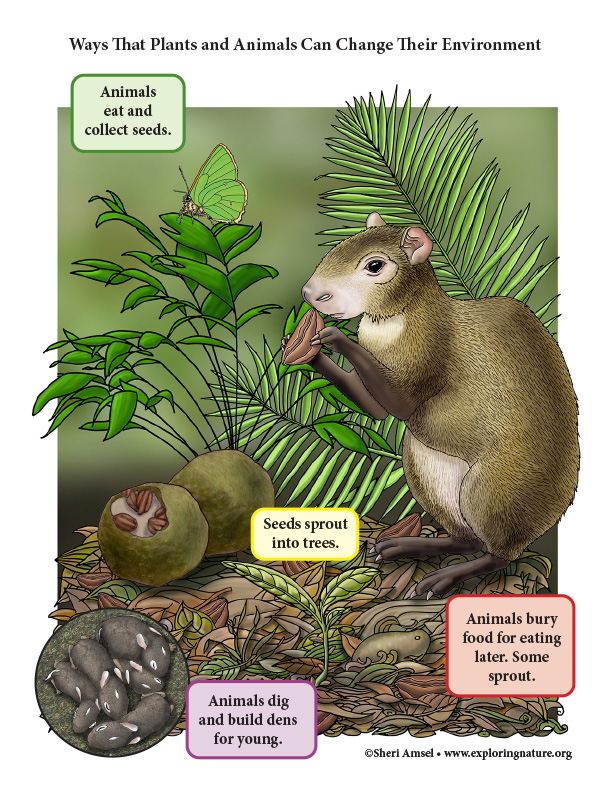

ESS2.E: Biogeology
• Plants and animals can change their environment. (K-ESS2-2)
ESS3.C: Human Impacts on Earth Systems
• Things that people do to live comfortably can affect the world around them. But they can make choices that reduce their impacts on the land, water, air, and other living things. (secondary to K-ESS2-2)
Read to students the "How Plants and Animals Affect the World Around Them" essay and study and talk about the accompanying graphic poster "Ways the Plants and Animals can Change Their Environment." These are tailored to life in the Amazon Rainforest.
Talk about how plants and animals affect other things and give some examples (e.g. agouti bury Brazil nut Seeds to save for later and some of them grow into Brazil Nut Trees trees, rainforest clearing kills the orchid bees that pollinate the flowers of Brazil nut trees, etc. etc.).
Then go on the other activities in the Biogeology and Human Impacts Unit below:
Ways That Plants and Animals Can Change Their Environment in the Rainforest - Matching
Ways That Plants and Animals Can Change Their Rainforest Environment - Coloring Page


